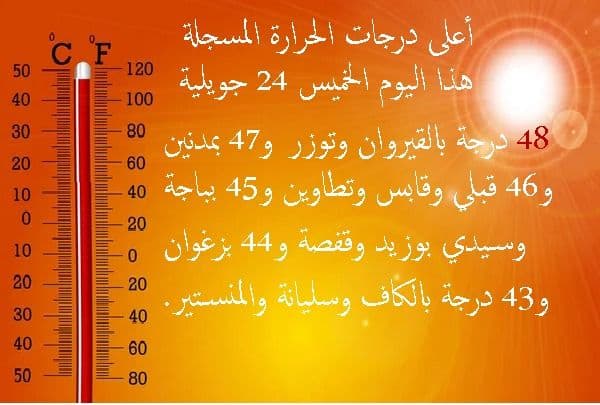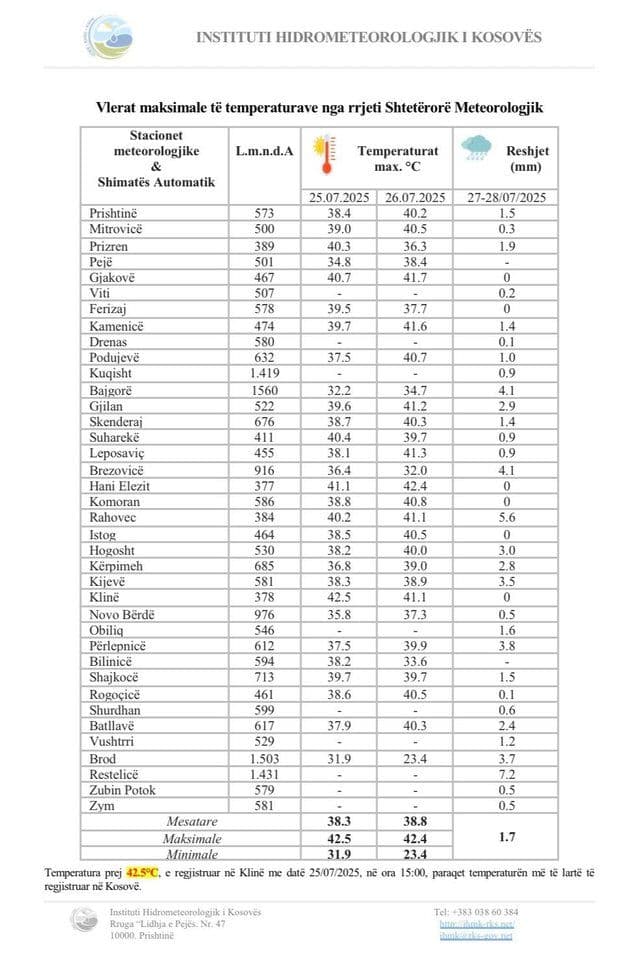Under a Fervent Sky: Tozeur's Unprecedented Heat and the Shifting Sands of Climate Reality
Beyond the mercury: Tozeur's extreme 48°C heat reveals climate's grip on arid lands. Explore societal impacts, from fires to daily life, and the urgent need for adaptation.
The Day the Desert Boiled: Tozeur's Record-Shattering Temperatures
Tozeur, a city usually accustomed to the fierce embrace of the desert sun, experienced a truly unprecedented day on Thursday, July 24th. At precisely 1 PM, the mercury soared to a blistering 48 degrees Celsius (118.4 degrees Fahrenheit), a record-shattering temperature for the region. This wasn't just another hot summer day; it was a stark declaration from the climate, confirmed by the via its official Facebook page, that the desert was quite literally boiling. Imagine stepping outside into an oven, the air thick and shimmering, every surface radiating an intense, unforgiving heat. The usual rhythms of life in this vibrant oasis city would have undoubtedly faltered; schools might have closed, outdoor work ceased, and the streets likely emptied as residents sought any available refuge from the relentless sun. Such extreme heat doesn't merely warm the air; it permeates everything, transforming daily routines, challenging infrastructure, and casting a palpable pall over the landscape. For a place where life itself is a testament to adapting to arid conditions, this reading was a significant marker, pushing the boundaries of what is considered "normal" even in a desert environment. It was a day that etched itself into the collective memory, not just as a statistic, but as a visceral experience of a world pushed to its thermal limits.
Cascading Consequences: How Extreme Heat Fuels Fire and Thirst
The intensity of Tozeur's record heat isn't an isolated phenomenon; it's a potent catalyst for a chain reaction of environmental and societal challenges. When temperatures soar to 48°C, the landscape becomes a tinderbox. Just as Tozeur simmered, news emerged of a significant wildfire erupting on in , necessitating reinforcements from three neighboring governorates to bring it under control. This isn't a coincidence; extreme heat dries out vegetation, making it highly susceptible to ignition and rapid spread, turning even minor sparks into raging infernos that devastate ecosystems and threaten communities. Beyond the immediate danger of fire, such heatwaves profoundly exacerbate water scarcity, a perennial concern in arid regions like . While a specific resolution regarding water transfer in was reported, it underscores the constant pressure on water resources. High temperatures lead to increased evaporation from reservoirs and soil, intensify agricultural water demand, and push up consumption for cooling, straining already fragile supply systems. These are not separate problems but intertwined consequences, where one extreme event amplifies existing vulnerabilities, creating a complex web of challenges that stretch far beyond a single thermometer reading.
Adapting to the Inferno: Local Resilience and Looming Vulnerabilities
For centuries, communities in regions like have developed ingenious ways to coexist with the desert's heat, from thick-walled adobe homes that naturally insulate against the sun to lifestyles that prioritize siestas during the hottest parts of the day. This ingrained resilience has long been their shield against the fervent sky. Yet, when temperatures breach the 48°C mark, even these time-honored adaptations begin to show their limits. The sheer scale of such heat places immense strain on modern infrastructure, from overworked electrical grids struggling to power air conditioning units to the crucial water supply systems already battling scarcity. Human health becomes a paramount concern, with increased risks of heatstroke, dehydration, and exacerbated chronic conditions, especially for the elderly and vulnerable populations. Beyond immediate health, the economic fabric of these communities, often reliant on agriculture or tourism, faces direct threats. Date palm oases, the lifeblood of , require careful management under such conditions, and extreme heat can deter visitors. This record-breaking day therefore highlights a critical juncture: traditional resilience is vital, but against an increasingly extreme climate, new strategies and robust investments in resilient infrastructure and public health are not just beneficial, but an absolute necessity to prevent looming vulnerabilities from becoming full-blown crises.
The Thermostat of Tomorrow: What Tozeur's Heatwave Tells Us About Our Climate Future
Tozeur's 48°C day isn't merely a local weather anomaly; it's a stark, undeniable signal from the global climate system. This record-shattering temperature serves as a visceral illustration of what a rapidly warming planet means for arid regions and, by extension, for all of us. Such extreme heatwaves are becoming more frequent, more intense, and longer-lasting across the globe, a direct consequence of human-induced climate change. Tozeur's experience is a glimpse into the thermostat of tomorrow, showing us a future where temperatures once considered exceptional could become the new norm. It underscores the urgent imperative for both aggressive global mitigation efforts to reduce greenhouse gas emissions and robust local adaptation strategies. Communities everywhere, but especially those already on the front lines of climate impacts like , must accelerate their plans for resilience—from developing sustainable water management practices to redesigning urban spaces and fortifying critical infrastructure. This isn't an abstract scientific projection; it's a lived reality, a potent call to action. To ignore Tozeur's fervent sky is to turn a blind eye to the profound changes already underway, changes that demand our immediate and collective attention for a more stable and livable future.
Related Articles

Rewriting the Rhythms: When Extreme Heat Becomes the New Normal

Rewriting the Rhythms: When Extreme Heat Becomes the New Normal

The Chehili Chronicles: Unveiling Tunisia's Extreme Heat Phenomena

The Chehili Chronicles: Unveiling Tunisia's Extreme Heat Phenomena

From Scorching Peaks to Shifting Skies: Navigating the Dynamics of Extreme Temperatures

From Scorching Peaks to Shifting Skies: Navigating the Dynamics of Extreme Temperatures

The Mercury's New Horizon: Navigating an Era of Unfamiliar Climates
